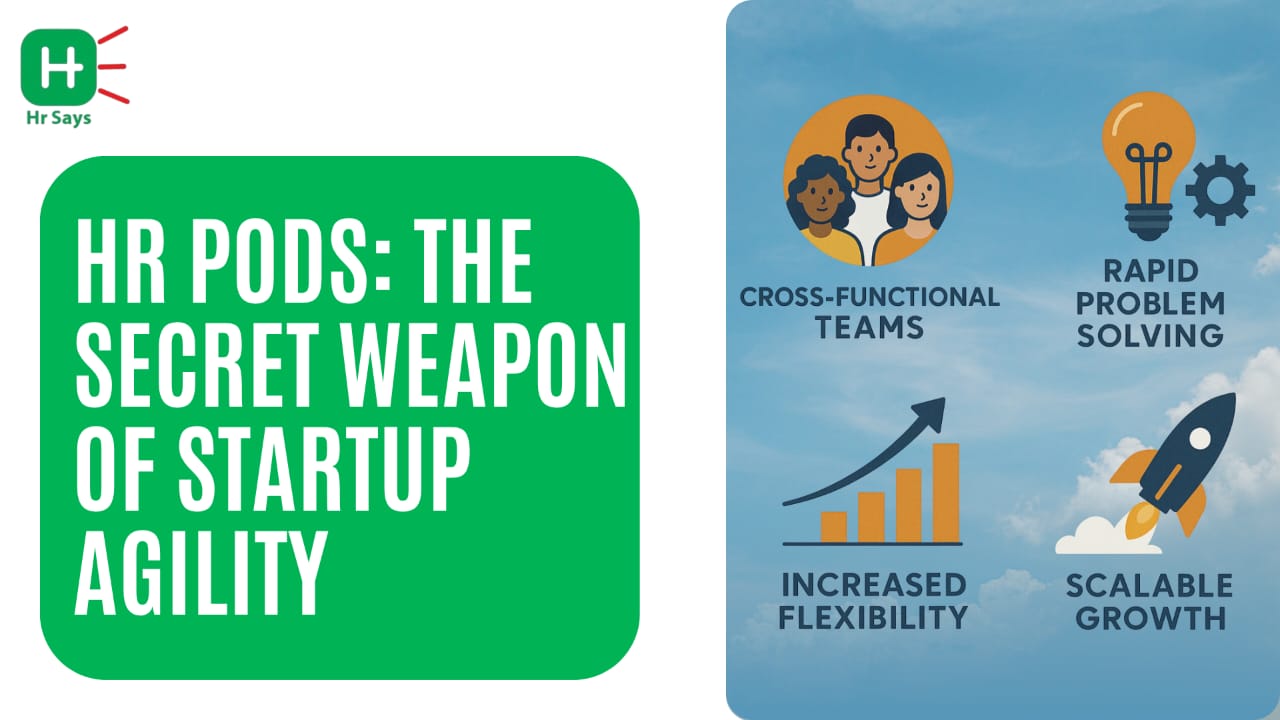Ever wondered how fast-scaling startups keep up without losing their people focus? While products evolve and markets shift, HR often struggles to keep pace. But there’s a new model quietly transforming people operations—Agile HR Pods. It is time to de-mystify what they are, how they work, and why they are important to high-growth chaos.
The Rise of Agile HR Pods
In the world of startups, change is the only constant.
Traditional HR models often buckle under the pressure of scale. There is slowness in hierarchies. Bottlenecks are formed when the decision-making becomes centralized. It is here that Agile HR Pods step in, small, cross-functional teams have discrete people goals.
These pods are built like mini-startups within a startup. They operate independently but stay aligned with company objectives. They’re not just a trendy term—they’re reshaping how HR functions.
Why Startups Need Pods, Not Policies
Startups move fast. Policies don’t.
Agile pods thrive in uncertainty. They adapt, iterate, and deliver quick solutions—unlike one-size-fits-all frameworks that crumble during scale. HR pods help address the micro-needs of teams across functions, without waiting for leadership loops or slow approvals.
Key reasons startups adopt HR pods:
● Hyper-focus: Each pod solves for a specific goal—onboarding, DEI, performance, etc.
● Speed: No waiting for central teams. Pods test and implement in real time.
● Empowerment: Decisions are made closer to the problem, not five levels above.
● Alignment: Pods sync regularly with core leadership, avoiding silos.
Anatomy of a High-Impact HR Pod
Not every pod is built right. Many fail when roles blur or strategy lacks clarity. A strong pod balances autonomy with accountability.
Core ingredients of a functional pod:
● 3–5 team members, ideally from varied HR domains
● A clear charter: What problem are they solving?
● Weekly sprints to test and iterate
● Feedback loops from employees, not just leadership
● A lead or anchor: Someone who nudges the pod forward
The structure makes a difference, but it is the attitude that makes all the difference.
Obstacles You Are Going to Encounter (And Get Over)
Pods sound ideal. But reality has its mess.
There’s confusion. Overlaps. Ego clashes. Even burnout. But these aren’t deal-breakers. They’re part of building something new.
Here’s what helps:
● Define boundaries early
● Align pods with real business needs
● Prioritize communication—with each other, and with other pods
● Document learnings to avoid repetition
Mistakes happen. That’s part of agility.
From Chaos to Clarity: Final Take
Startups don't need more HR frameworks. They need people strategies that evolve at startup speed.
Agile HR Pods are not just an operating model—they’re a mindset. One that trades perfection for progress. Silos for collaboration. Policies for action.
In fast-moving environments, this might be the only way HR stays relevant, responsive, and human.

 Agile HR Pods offer a nimble, people-first model for HR teams in fast-scaling startups. Designed for speed and alignment, they replace rigid structures with flexible, focused teams that adapt to real-time business needs.
Agile HR Pods offer a nimble, people-first model for HR teams in fast-scaling startups. Designed for speed and alignment, they replace rigid structures with flexible, focused teams that adapt to real-time business needs.












.jpeg)












.jpeg)